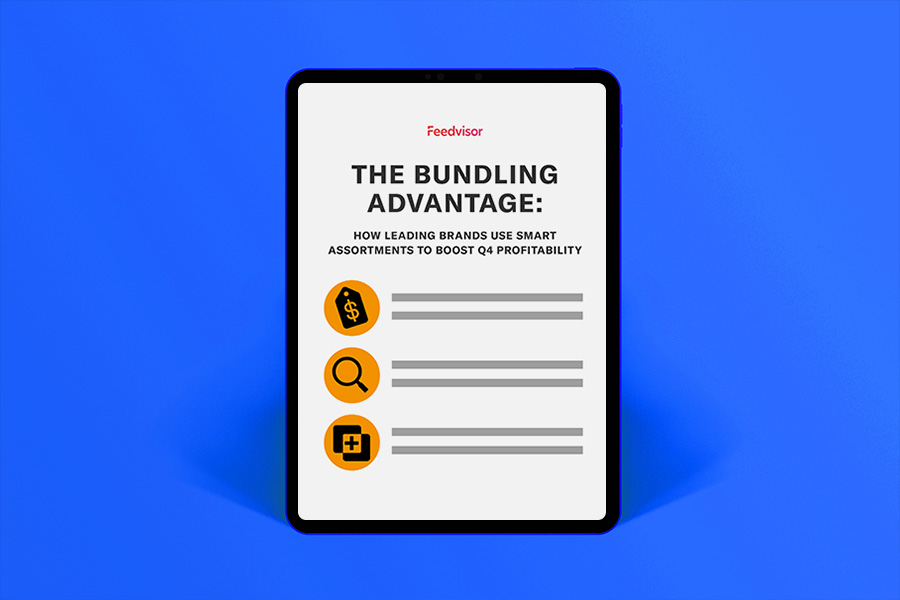
Categories
Latest Posts
Tags
Advertising Amazon Amazon Advertising Amazon Experts Amazon Listing Optimization Amazon Marketplace Amazon News Amazon Prime Amazon Professional Sellers Summit Amazon Seller amazon sellers Amazon Seller Tips Amazon Seller Tools ASIN Brand Management Brands Buy Box Campaign Manager Conference COVID-19 downloadable Dynamic Pricing Ecommerce FBA FBM Holiday Season industry news Multi-Channel Fulfillment Optimize pay-per-click Pricing Algorithm Pricing Software Private Label Profits Repricing Repricing Software Revenue Sales Seller Seller-Fulfilled Prime Seller Performance Metrics SEO SKU Sponsored Products Ads Strategy
Get the latest insights right in your inbox
Resource | Blog

Multichannel Made Easy: Why Walmart’s Amazon MCF Approval Matters
SUMMARY
Walmart approves Amazon MCF for Marketplace orders—removing fulfillment barriers and enabling faster multichannel growth. Learn how to get started.

Rachel Horner
Walmart’s recent approval of Amazon’s Multi-Channel Fulfillment (MCF) for Marketplace orders is a smart move toward simplifying multichannel selling.
By officially allowing Amazon’s Multi-Channel Fulfillment (MCF) for Marketplace orders, Walmart is eliminating one of the biggest operational hurdles sellers face when branching out: logistics. Instead of building an entirely new fulfillment system, sellers can now use the infrastructure they already rely on for Amazon.
It’s a strategic move and a clear message. Walmart wants top-tier sellers, and they’re willing to rewrite the rules to get them.
Here’s what you need to know to take advantage of this shift and how to get started with Amazon MCF on Walmart.
Why did Walmart Decide to Permit Amazon MCF?
As marketplace competition intensifies and Amazon fees climb, multichannel expansion has become a critical growth strategy. In our latest e-commerce report, 51% of brands cited marketplace expansion as a top growth strategy.
Amazon may still drive the lion’s share of revenue, but scaling through other channels—especially Walmart—offers brands the chance to diversify income, reduce risk, and tap into new audiences. With lower saturation, Walmart’s marketplace gives brands a better shot at visibility and traction—especially for brands looking to break through crowded categories.
Walmart’s approval of Amazon MCF is a direct response to this trend. For many sellers, the biggest barrier to expansion has been fulfillment complexity. Setting up an entirely new logistics system is expensive, time-consuming, and operationally taxing.
By enabling Amazon MCF for Walmart orders, Walmart cuts operational risks tied to managing multiple fulfillment networks, reducing complexity and costs so that brands can accelerate marketplace expansion.
Walmart’s decision to permit Amazon’s Multi-Channel Fulfillment for Marketplace orders is a smart, seller-centric move, and one that acknowledges the operational realities of modern multichannel commerce. By removing the requirement to maintain separate fulfillment infrastructure, Walmart is eliminating a major barrier to seller expansion and making it easier for brands to scale efficiently across platforms.
Dani Nadel, President and COO of Feedvisor
One large seller recently shared with Feedvisor: “The cost and complexity of managing separate fulfillment for Walmart was our main blocker. Now we can test and grow on Walmart using the same infrastructure that already works for us on Amazon.”
Expanding the Right Way
Of course, expansion isn’t as simple as flipping a switch. Whether you’re eyeing Walmart, TikTok Shop, or Temu, success on a new marketplace requires more than fulfillment alignment. But removing logistical barriers is a massive first step. Sellers can refocus on understanding new audiences, optimizing product selection, and refining pricing and advertising strategies that align with each channel.
How Can I Start Using Amazon MCF on Walmart?
Walmart now officially allows sellers to fulfill Marketplace orders using Amazon’s Multi-Channel Fulfillment (MCF), but getting started means following a strict set of guidelines to remain compliant and avoid penalties.
Here’s what’s required:
- Ship all orders in plain, unbranded packaging
Exclude Amazon Logistics as a carrier to avoid Amazon-branded vehicles making deliveries
Offer at least one shipping option that meets Walmart’s delivery expectations
Keep lag time and delivery windows accurate and up to date in Walmart Seller Center
Fulfill orders until at least 11:00 AM local time, five days a week
Cap time off at 15 days annually per fulfillment location
Share tracking details only after the order has shipped
And here’s what’s still not allowed:
- Retail arbitrage—you can’t dropship from another retailer
Competitor-branded packaging of any kind
Including promos, packing slips, or invoices from any other seller or platform
Marking an item “shipped” before it’s actually on the way - One point of clarification: even if you block Amazon Logistics, some USPS tracking may still show “Amazon” on the label. Walmart has stated this is now acceptable.
You can also use Amazon’s MCF to fulfill Walmart orders, ship Amazon FBM orders via Walmart WFS (through MCS), and leverage either service to support sales from additional platforms.
The bottom line: If you’re looking to scale across marketplaces without rebuilding your fulfillment stack from scratch, this is your green light.

Take Back Control of Your Margins
Tariffs may be out of your hands—but your pricing strategy isn’t. Talk to us today and turn uncertainty into opportunity.
Final Thoughts
At Feedvisor, we see this as a natural—and necessary—evolution in e-marketplace strategy. As an AI-powered optimization platform for brands and sellers across both Amazon and Walmart, we help businesses manage dynamic pricing, inventory-aware advertising, and in-depth analytics in one place.
This shift lays the groundwork for smarter, more efficient cross-marketplace growth—and empowers sellers to scale with confidence in an increasingly complex e-commerce landscape.
Expanding to Walmart or scaling your 3P strategy? Feedvisor helps top brands maximize growth and profitability with AI-driven pricing, advertising, and marketplace optimization across today’s leading e-marketplaces. Try it now, free for 14 days.




